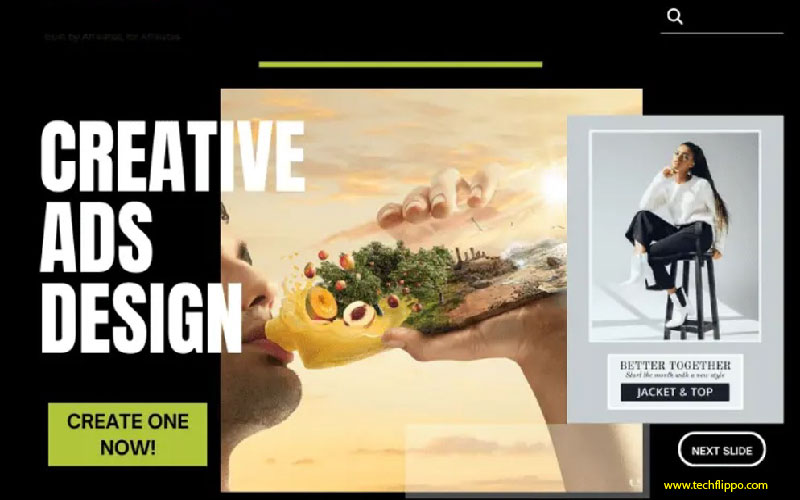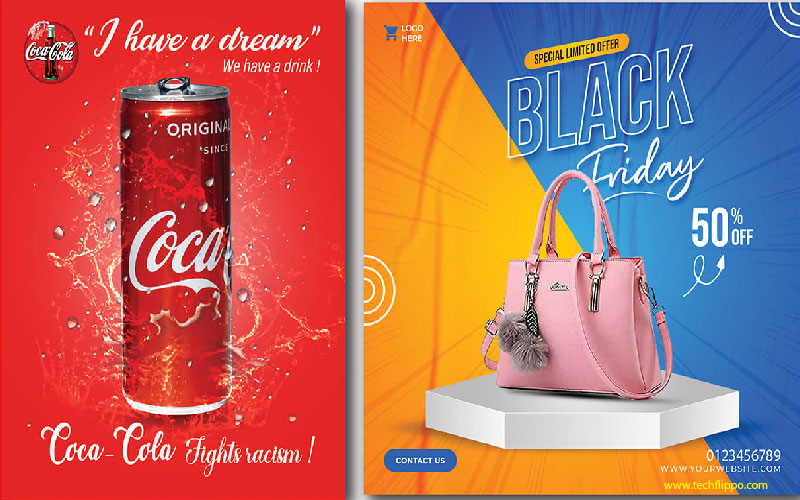Tips for Crafting Creative Ad Designs that Captivate
In a world flooded with advertisements, standing out is more crucial than ever. Creative ad designs are the key to catching eyes and sparking interest in your brand. Each visual element you choose plays a role in how potential customers perceive your message. But what exactly makes an ad captivating? It’s not just about slick graphics or catchy slogans; it’s about connecting on a deeper level.
As consumers scroll through endless content, they crave something that resonates with them—something memorable that prompts action. Whether you’re crafting ads for digital platforms or print media, understanding the nuances of design can elevate your advertising game significantly. Let’s dive into some essential tips and insights that will help you create stunning creative ad designs that captivate audiences and leave lasting impressions.

Understanding the Importance of Creative Ad Designs
Creative ad designs play a pivotal role in how brands communicate with their audience. They serve as the first point of contact, often determining whether someone engages or scrolls past.
In an era where consumers are bombarded with information, creativity cuts through the noise. A unique design can turn heads and ignite curiosity, making viewers stop and take notice.
Moreover, innovative ads help convey brand identity. Distinct visuals foster recognition and strengthen relationships with customers. When people associate specific colors or styles with a brand, it becomes ingrained in their minds.
There’s also the emotional component to consider. Creative ad designs evoke feelings that resonate deeply—whether that’s joy, nostalgia, or inspiration. This emotional engagement is crucial for driving action and building loyalty over time.
Investing in creative ad designs isn’t just about aesthetics; it’s about crafting powerful messages that connect on multiple levels.
The Psychology Behind Effective Ad Designs
Understanding the psychology behind effective ad designs is crucial for any marketer. Our subconscious plays a significant role in how we respond to visuals. People often make snap judgments based on design elements before reading the content.
Colors evoke emotions and associations. For instance, blue can instill trust, while red may create urgency. Choosing the right color palette can significantly influence consumer behavior.
Typography also impacts perception. A bold font might convey strength or confidence, while softer fonts can feel inviting and friendly. The choice of typeface must align with your brand’s voice.
Additionally, human brains are wired to seek out patterns. Designs that incorporate symmetry and balance tend to be more appealing and easier to process at a glance.
Leveraging these psychological principles not only enhances engagement but also builds deeper connections with your audience over time.
Utilizing Color and Typography in Ad Design
Color and typography are powerful tools in creative ad designs. They evoke emotions, create associations, and influence perceptions.
Choosing the right color palette is essential. Warm colors like red and orange can increase urgency, while cool tones like blue inspire calmness. Think about your brand identity when selecting hues to ensure consistency across all platforms.
Typography also plays a critical role. The font you choose conveys personality—serif fonts feel traditional, while sans-serif looks modern and clean. Balance readability with style; an artistic typeface may look appealing but can hinder message clarity.
Consider hierarchy in text placement too. Headings should grab attention first, followed by subheadings that guide the viewer’s eye through your message seamlessly. With careful thought on both color and typography, your ads will not only capture interest but resonate deeply with audiences as well.
Incorporating Visual Elements and Imagery
Visual elements and imagery play a crucial role in capturing attention. They can tell a story faster than words alone. A compelling image can evoke emotions and create connections.
Choose visuals that align with your brand message. Consistency is key; use images that reflect your identity. This builds trust with your audience.
High-quality visuals make a significant difference. Blurry or pixelated images may deter potential customers. Invest time in selecting the right graphics, illustrations, or photographs.
Consider varying visual styles to keep things fresh. Experimenting with different design approaches adds intrigue to your ads.
Don’t forget about whitespace! It helps frame your visuals effectively, allowing them to stand out without overwhelming the viewer’s eye.
Striking imagery combined with thoughtful design creates an engaging experience for audiences, making them more likely to remember your ad.
Tips for Creating a Memorable and Impactful Message
A memorable message is clear and concise. Start with a strong hook that grabs attention right away. It could be a surprising fact, an intriguing question, or an emotional statement.
Use storytelling to connect with your audience. People remember stories better than facts alone. A relatable narrative creates empathy and draws them in.
Keep your language simple and direct. Avoid jargon that might confuse readers. Instead, use vivid imagery and sensory words to paint a picture in their minds.
Make sure the core takeaway stands out. Highlight key points using bold text or bullet lists for easy scanning.
Evoke emotions through your message. Whether it’s humor, nostalgia, or inspiration—feelings linger long after the ad is seen. Crafting this connection makes it truly unforgettable.

Thinking Outside the Box: Unique Approaches to Ad Design
Ad design thrives on creativity. To stand out, you must think differently. Break the mold and challenge conventional norms.
Consider storytelling as a primary element. A compelling narrative can turn a simple ad into an experience. Engage your audience with relatable characters or unexpected scenarios that evoke emotion.
Play with formats too. Instead of traditional banners, explore interactive ads or augmented reality experiences to captivate viewers’ attention in novel ways.
Incorporate unconventional materials or textures if you’re working with physical ads. This tactile approach can create memorable interactions that digital platforms simply can’t replicate.
Don’t shy away from humor either; it can disarm audiences and make your message more relatable. Quirky visuals and witty copy often leave a lasting impression long after they’ve been seen.
Experimentation is key to finding fresh ideas that resonate deeply while pushing boundaries within the advertising landscape.
Measuring Success: Analyzing the Effectiveness of Your Ad Design
Measuring the success of your creative ad designs requires a keen eye on various metrics. Start by analyzing engagement rates, such as clicks and shares. High interaction levels often indicate that your design resonates with the audience.
Next, monitor conversion rates to see how many viewers take action after seeing your ad. This step is crucial in determining whether your design compels potential customers to engage further.
Don’t forget about brand recall. Surveys can help assess if people remember your ad days or weeks later. A strong memory tether indicates effective visuals and messaging.
Utilize tools like Google Analytics for in-depth insights into user behavior post-ad exposure. Track where visitors go on your site after interacting with the ad; this information can guide future designs.
Gather feedback from real users through focus groups or social media polls. Their opinions could offer invaluable perspectives that data alone might miss.
Conclusion
Crafting creative ad designs is an art that requires a blend of psychology, aesthetics, and strategy. By understanding the importance of unique visuals and leveraging color and typography effectively, you can create ads that resonate with your audience. It’s crucial to incorporate visual elements thoughtfully while ensuring your message remains clear and impactful.
Thinking outside the box allows for innovative approaches that can set your brand apart in a crowded market. Remember to analyze the effectiveness of your designs regularly; metrics will guide you in refining future campaigns.
As you embark on creating captivating ad designs, keep experimenting and evolving. The world of advertising is dynamic, making adaptability key to engaging audiences successfully. Embrace creativity as an ongoing process—one that leads to memorable connections with consumers who are eager for fresh ideas.